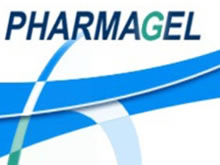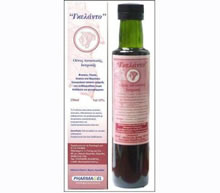
Λεξικό .. Salivary peanut protein
Salivary peanut protein, ΦυστικοπÏωτεÎνη του σιÎλου. Exposure to food allergens through saliva (kissing, utensils) can cause local and systemic allergic reactions. To determine the time course of peanut allergen (Ara h 1) persistence in saliva after ingestion of peanut butter and to evaluate mouth cleansing interventions to reduce salivary peanut allergen, Maloney JM, et al . examined Thirty-eight individuals who ingested 2 tablespoons of peanut butter, and saliva was collected at various time points.
At another time, samples were collected after 5 interventions (brushing teeth, brushing and rinsing, rinsing, waiting then brushing, waiting then chewing gum). Detection of Ara h 1 was performed by a monoclonal-based ELISA (detection limit, 15-20 ng/mL).
They found that salivary Ara h 1 varied considerably immediately after ingestion, but included levels expected to invoke reactions (as much as 40 microg/mL). Most (87%) subjects with detectable peanut after a meal had undetectable levels by 1 hour with no interventions. None had detectable levels several hours later after a peanut-free lunch. This result indicates (95% confidence) that 90% would have undetectable Ara h 1 in saliva under these circumstances.
All of the interventions reduced salivary Ara h 1, in some cases by >95%, but Ara h 1 remained detectable in approximately 40% of samples (though typically below thresholds reported to induce reactions). They concluded that patients with peanut allergy require counselling regarding risks of kissing or sharing utensils, even if partners have brushed teeth or chewed gum. Advice to reduce risks, though not as ideal as total avoidance, includes waiting a few hours plus eating a peanut-free meal. Waiting several hours and ingesting a peanut-free meal were more effective at reducing salivary peanut protein concentration than simple, immediate interventions.
References
Maloney JM, Chapman MD, Sicherer SH. Peanut allergen exposure through saliva: assessment and interventions to reduce exposure. Comment in: J Allergy Clin Immunol. 2007 Mar;119(3):755. J Allergy Clin Immunol. 2007 Mar;119(3):756; author reply 756-7.
Γκέλης Ν.Δ. - Λεξικό Αλλεργίας - Εκδόσεις ΒΕΛΛΕΡOΦΟΝΤΗΣ - Κόρινθος 2013
Gelis Ν.D. - Dictionary of Allergies - VELLEROFONTIS Publications - Corinth 2013




